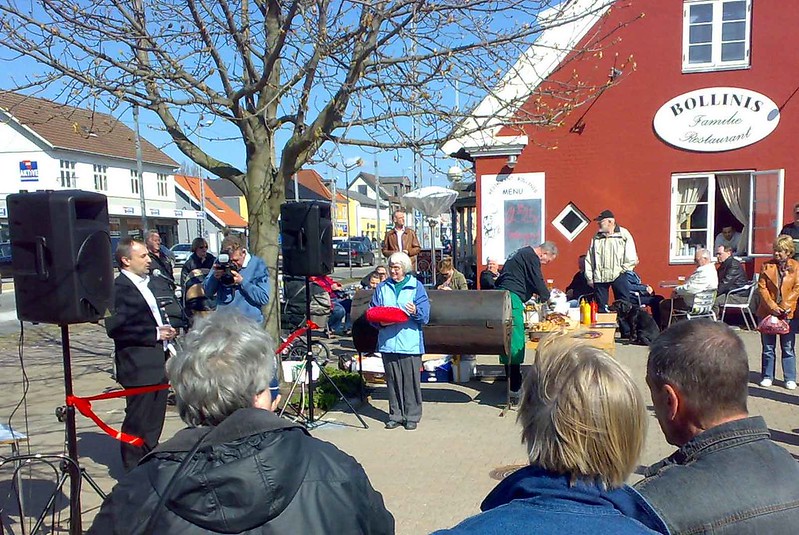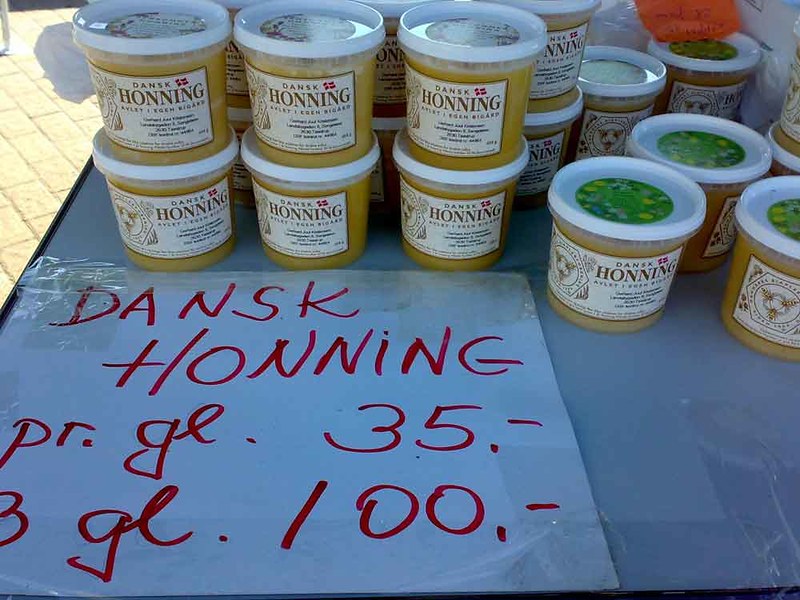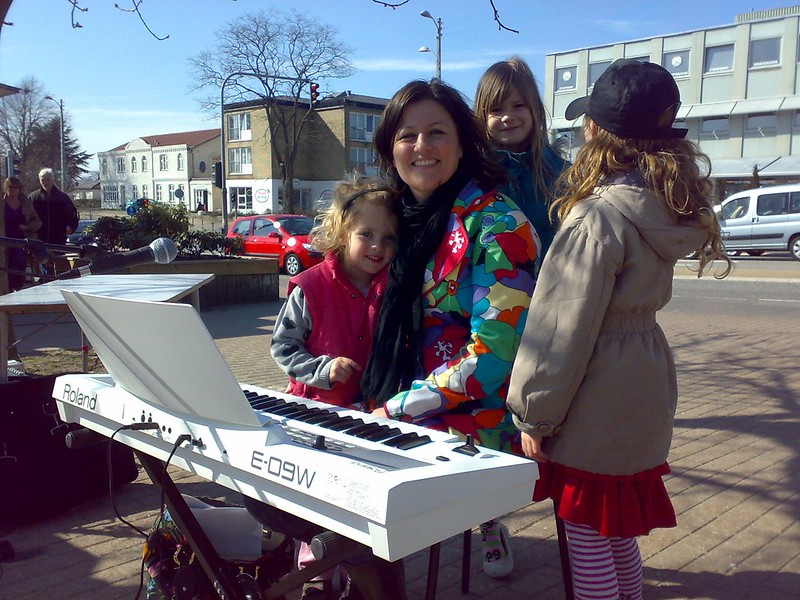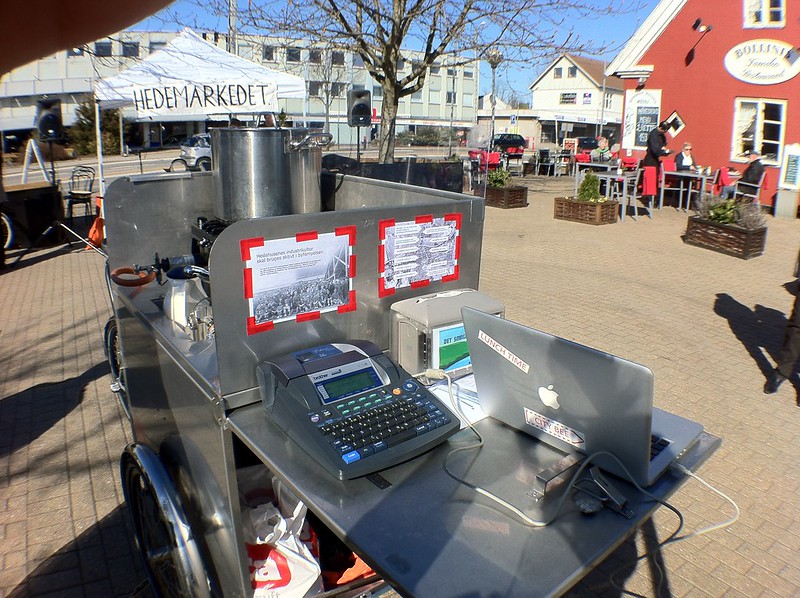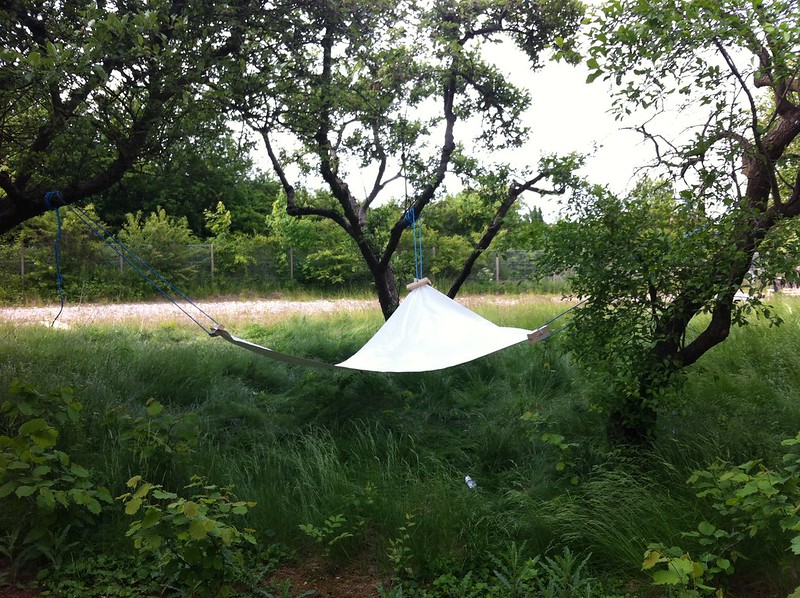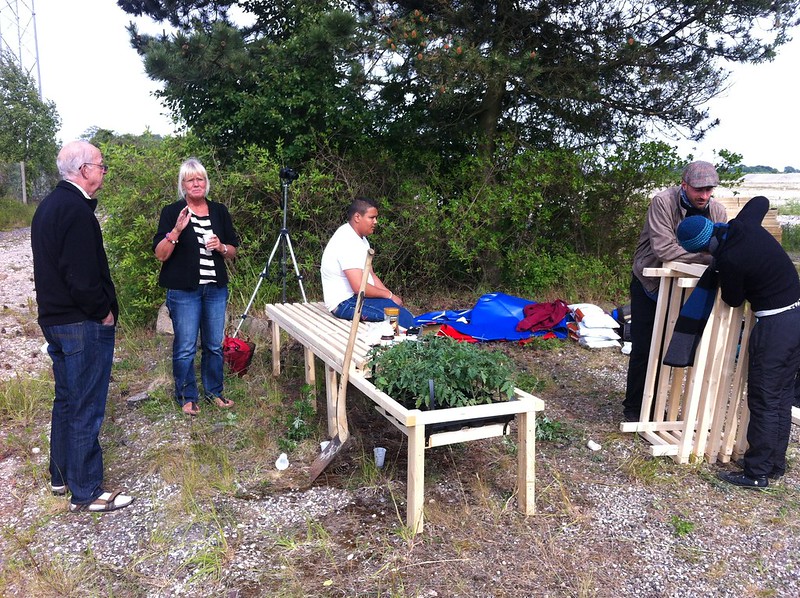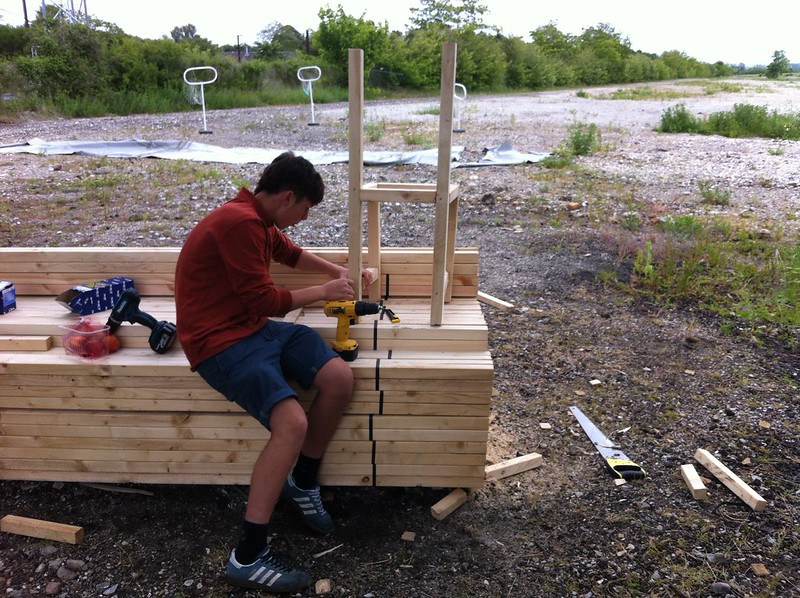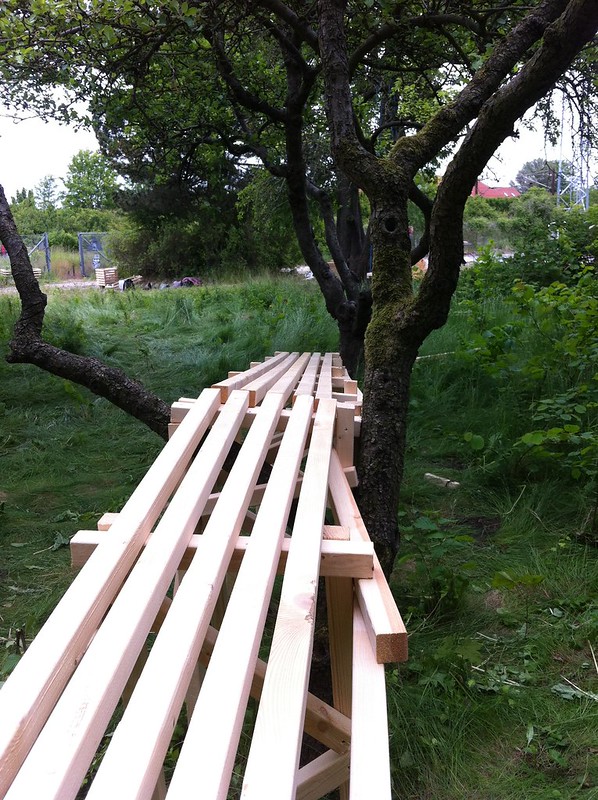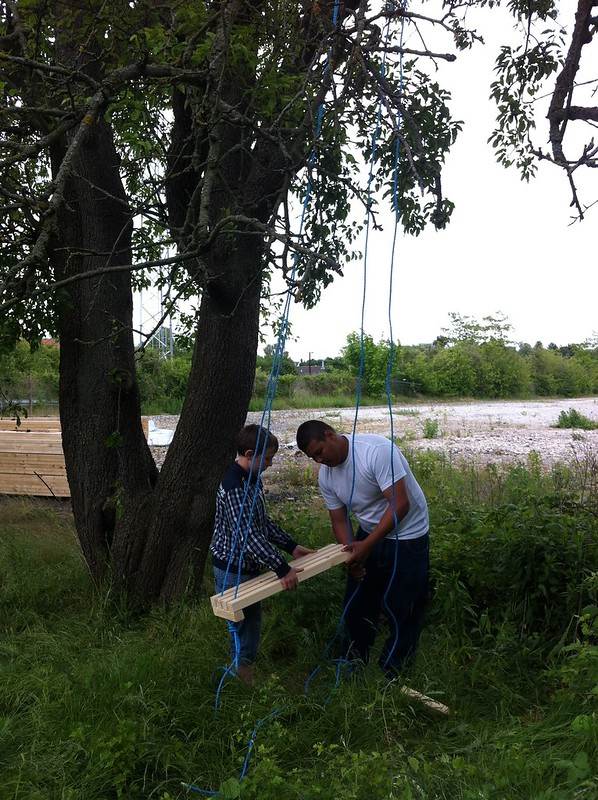
In the third phase we facilitated concrete actions based on the new localised ideas and networks. In this case the idea was to make an incubator for local projects in the empty train station. One of our actions was to design and build a module for the old train station that had a number functions.

A bench

A table

A stage

Our idea was that the flexibility of this design makes it less finished and more open for new ideas and discussions.
We did some practical things that made the Station function better like building a common storage

Some local musicians passed by and noticed the bad acoustics in the biggest room in the station – it used to be the waiting area. We made a large acoustic curtain that improved the discussion “climate” in the building.

We tried out a number of ways to use the building with local people; a cinema evening

Eating together

DJ Dr Jazz pLayed some of his records. This was also a test of the new acoustic curtain to see if it improved the possibility to play music there. It did.

Finally we organised a number of public meetings that discussed the use of the building so far.


As a result of the meeting and the prototyping before that, the building is slowly coming alive with a formal association, a local theatre group setting up their plays and more music arrangements.See all the photos here
In the third phase we also worked with the langauge that is used to talk about the local community. In our case we discovered the word offshoots which was used to describe a number of actions in the community like:
The many additions to the self build houses or how you move into an existing old factory building.

A new curated walk was organised to discuss the offshoots in the community and formalising the use of that word. We also choose to use the word offshoots to describe the third phase in the CiTyBee process:
Concrete spatial actions: either building and taking space in a visual and functional way but also changing the way we talk about space. Offshoots are ongoing changes to what is already there. Always leaving little seeds of imperfection that makes it open to new stories, discussions and offshoots.





























